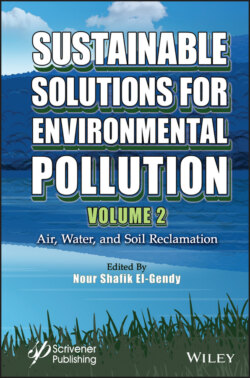Читать книгу Sustainable Solutions for Environmental Pollution, Volume 2 - Группа авторов - Страница 56
1.13 Wetland Monitoring 1.13.1 Monitoring Large-Scale CWs
ОглавлениеCWs can be monitored by setting probes and sampling devices at the inlet(s) and outlet(s), and sometimes within the water body itself, depending upon the accessibility. Some classical probes with self-storage capacity for long-term in situ monitoring measure temperature, pressure (for water level monitoring) (Auderset Joye and Boissezon, 2017), conductivity, dissolved oxygen, or light (Gardner et al., 2019). Drake et al. (2018) have monitored nitrates at the inlet and outlet of a large CW at high frequency (15 min) using a UV probe over periods of six months (the probes had to be removed in winter). The probes were able to catch the nitrate variations during rain events, which is not possible by manual low-frequency sampling. It was therefore possible to estimate with high accuracy the nitrogen removal potential of the CW (Drake et al., 2018).
For parameters which cannot be measured by in situ probes and which necessitate analysis in a laboratory, it is possible to take samples from the shore when the CW is not too large. It is more difficult for large-scale systems, especially in case of shallow zones. Aquatic drones (i.e., UAV or unmanned aquatic vehicle) which can be fitted with various probes (e.g., temperature, dissolved oxygen, and conductivity) and take samples while being controlled from the shore or running in autonomous drive are helpful in such conditions. Such an UAV is regularly used to monitor a 2-ha 50-cm-deep FSF-CW located downstream the urban wastewater treatment plant in Reims (France) and designed to polish the reclaimed wastewater (Figure 1.6). It is part of a set of three 2-ha FSF-CWs where the effect of emerged vegetation is currently investigated. The CW is rectangular (50 m × 350 m) and free from emerged vegetation. The UAV, fitted with a dissolved oxygen probe, a temperature sensor and a GPS is controlled from the shore and navigate along the centerline, while bringing water samples to the shore regularly. The dissolved oxygen profile collected in March 2020 is shown in Figure 1.7, together with the dissolved organic carbon and dissolved total nitrogen in the water samples (analyzed in the laboratory after the mission). A sharp increase of the dissolved oxygen concentration is observed 100 m downstream the inlet and corresponds to a large over saturation (150%) of dissolved oxygen: oxygen production is due to the photosynthesis performed by submerged aquatic plants (Ceratophyllum sp.) and algae. Nitrogen removal is observed between the inlet and the outlet of the CW, but dissolved organic carbon remains unchanged.
Figure 1.6 (a) The 2-ha FSF-CW (Reims, France) in March 2020; (b) the UAV (Spyboat, CT2MC), Petite-bourgeoise, France collecting samples and monitoring dissolved oxygen and temperature.
Figure 1.7 Monitoring the Reims FSF-CW with an aquatic drone. (a) Dissolved organic carbon (DOC, ) and dissolved total nitrogen (o) in discrete samples collected by the UAV; (b) dissolved oxygen saturation at sampling points; (c) dissolved oxygen concentration as registered by the UAV dissolved oxygen probe.
UASs (Unmanned Aerial Systems, i.e., aerial drone) have also been proposed to collect water samples from the sky (Lally et al., 2019). The payload is still rather limited (200 to 300 ml approximately), especially for small UASs and the success rate of water capture needs to be increased. Nevertheless, development is progressing in that field: Benson et al. have reported the successful collection of small sterile water samples (50 ml) for microbial identification in water bodies (Benson et al., 2019).
